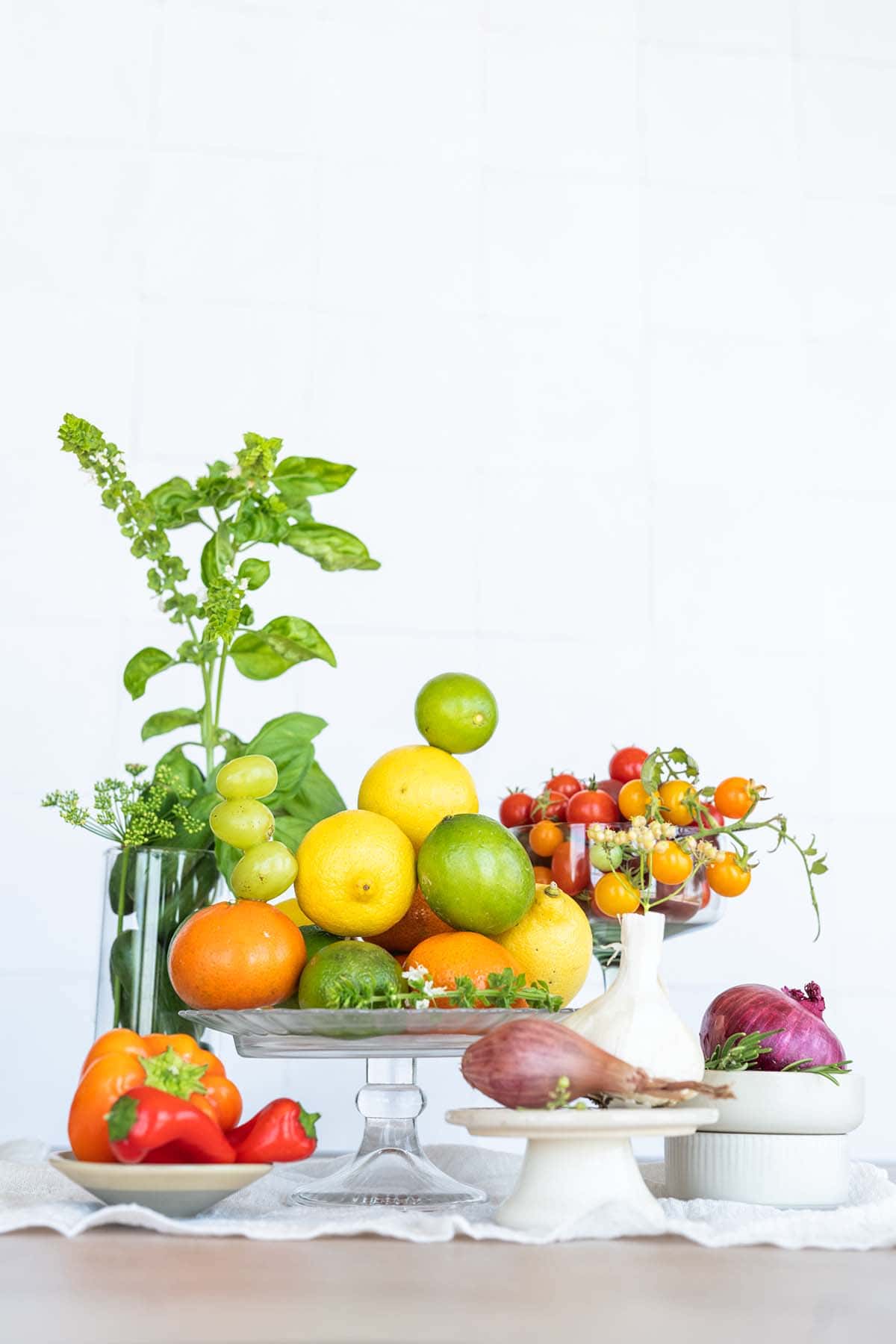Make Your Own Edible Centerpieces
Learn how to make your own easy and elegant edible centerpieces using fresh CA Grown produce! Set the tone and set the table with these creative and stunning centerpieces made of edible ingredients that can be used in meals after the party is over!
When styling a table for a large party or intimate gathering, classic floral arrangements, snackable cheese boards or charcuterie spreads are always solid options. But have you ever considered an elegant edible centerpiece made of fresh California Grown produce?
Edible centerpieces put produce at the center of the table and the conversation
Squash and melons, tomatoes and peppers, grapes and lemons; generally these items get stored in the fridge or mindlessly stuffed in a fruit basket and shoved into a corner. Instead, edible centerpieces transform everyday food items into consumable sculptures that are sure to level up any meal. By placing fresh fruits and veggies on full display, these centerpieces show off the unique, colorful and naturally sculptural personalities of each ingredient.
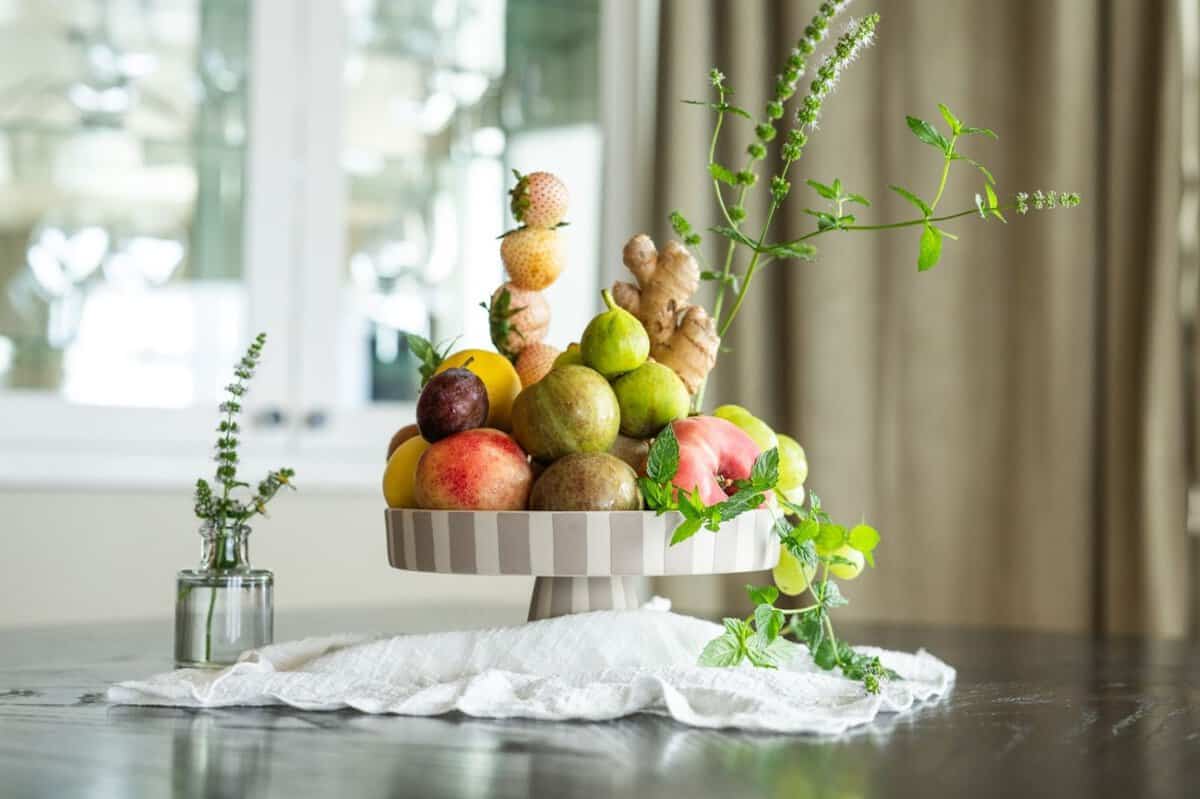
Renaissance era still life meets modern day floral arrangement
The still life genre rose to prominence during the Renaissance, when artists began creating realistic studies of everyday, inanimate objects like flowers or tablescapes featuring foods, textiles and tableware. Still life paintings often feature an abundance of food piled high, artfully draped over fine china or teetering on tiered platters atop billowy linens. They’re a study of light, color and composition that transform ordinary produce into something extraordinary.
Celebrating the natural beauty of ordinary produce
These edible centerpieces are rooted in the principles of still life, celebrating the ordinary by presenting it in a new and artistic way. 3D produce sculptures highlight the shapes, lines and colors of various fruits and vegetables through simple structure and arrangement. It’s a bit like floral arranging but with an edible array of nourishing and beautiful ingredients.
Edible centerpieces are easy to make
Don’t let the stunning presentation fool you, edible centerpieces are incredibly simple to assemble. With a basic vision, a few simple tools, and an openness to explore your artistic side, you’ll be building your own edible centerpieces in mere minutes!
Tools for building edible centerpieces
- Toothpicks work wonders in creating stability. Use them to lock fruits or veggies together so they stay put.
- Kabob skewers allow for even more drama with more height. And they work well when securing larger items such as melons or squash.
- Fishing line & a needle are handy for creating a string of ingredients, like a garlic garland or a strand of pearl tomatoes. Simply use the needle to poke through the produce and string together whatever your beautiful mind dreams up.
- Floral wire is a great tool for creating a skyward-reaching spiral or an arcing element to build height and drama. Use stainless steel or aluminum wire, and be sure to wash the wire with water and dish soap and thoughtfully dry before arranging. If you are uncomfortable with wire, stick with the wood toothpicks and skewers.
- A pair of pliers comes in handy when snipping and shaping wire or wooden skewers to shorter lengths and fun shapes.
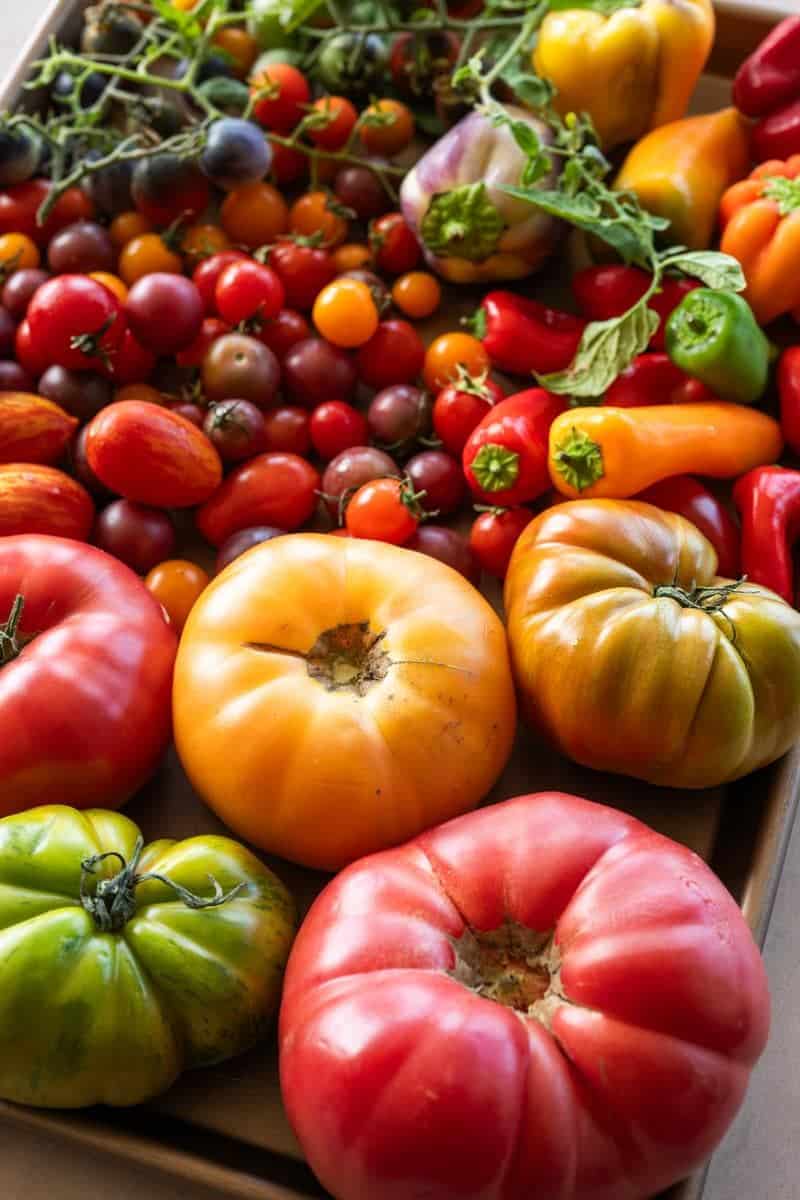
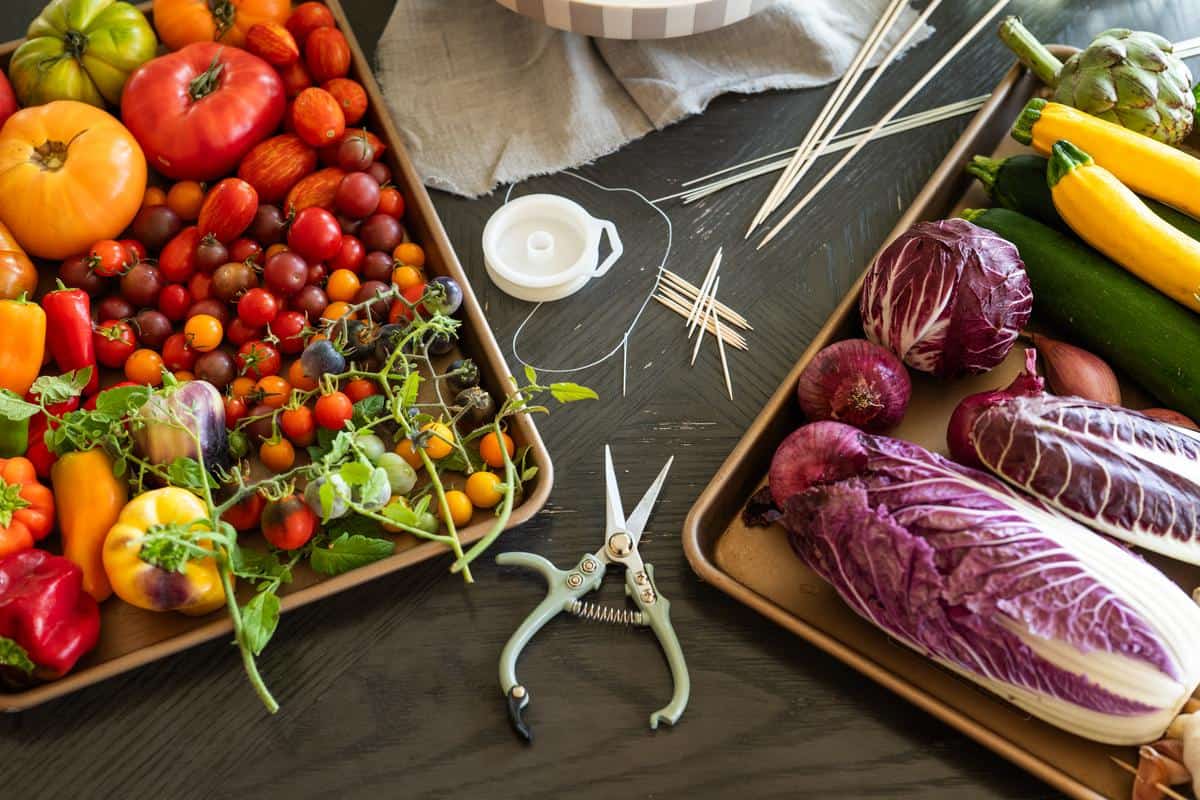
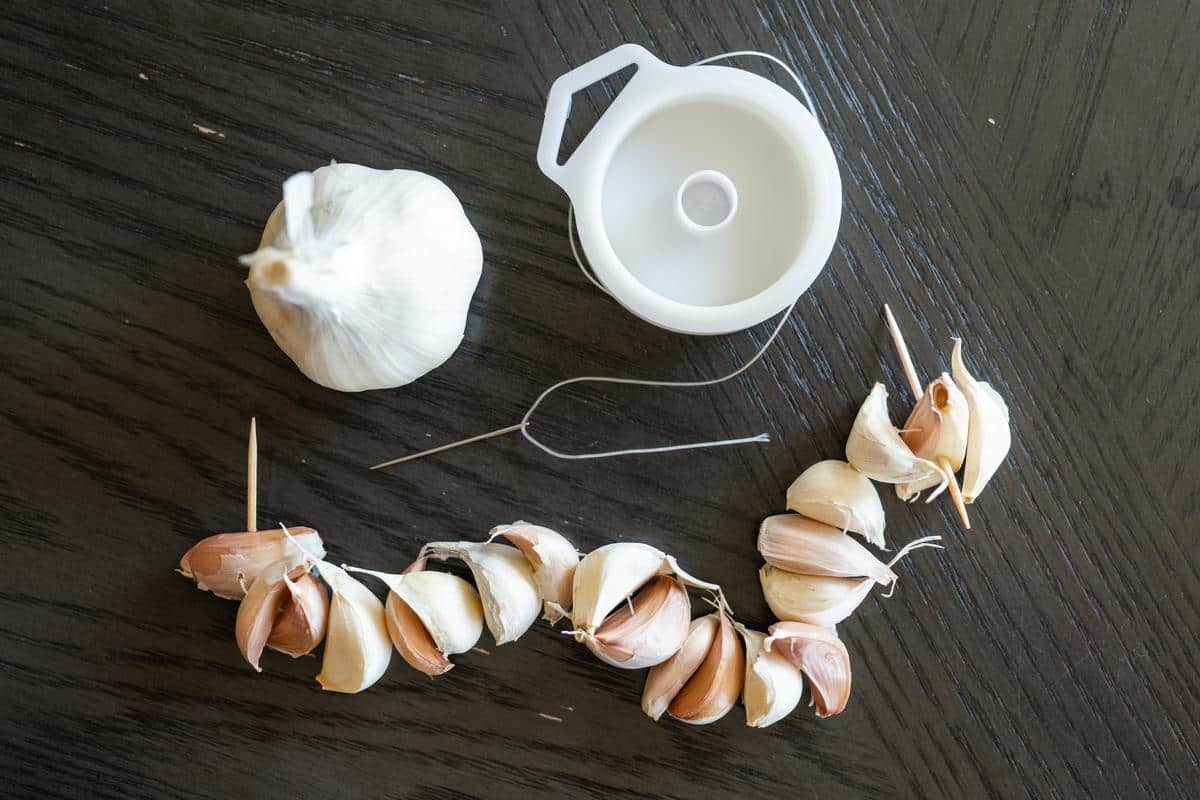
Pick a theme for your edible centerpiece
When shopping for edible centerpiece ingredients, it’s helpful to come up with a theme first. It’s not necessary, but picking a theme can help you visualize your piece before building. Keep it simple by choosing seasonal produce or go detailed with a specific recipe inspired theme.
- Peak produce. Choose seasonal produce that’s peaking. Nothing beats in-season produce, for both the eyes and taste buds.
- Fruit-forward or veg-centric. A full-on fruit theme is a fun start, but so is an all-veggie endeavor. Either way, you can’t go wrong.
- Color scheme theme. Pick a color or a range of colors and roll with it. For a single tone look, use all green fruits and veggies or go for a ombre effect with produce in the yellow, orange and peach range. Alternatively, pick contrasting colors like red and green for a vibrant visual. Rich red tomatoes and deep leafy greens is a classic color pairing.
- Make it a meal. By using ingredients that can be incorporated into a recipe, you are planning ahead and making a meal out of it. Combine onions, garlic, peppers and tomatoes in your arrangement. Then post party, transform them into an pillowy and flavorful Antipasto Focaccia or a hearty Herby Feta Lemon Chicken and Veggie Sheet Pan Dinner that will carry you through the week ahead. Use a blend of fresh stone fruit and later toss it all together to make Simple Summer Stone Fruit and Burrata Salad. So many options!


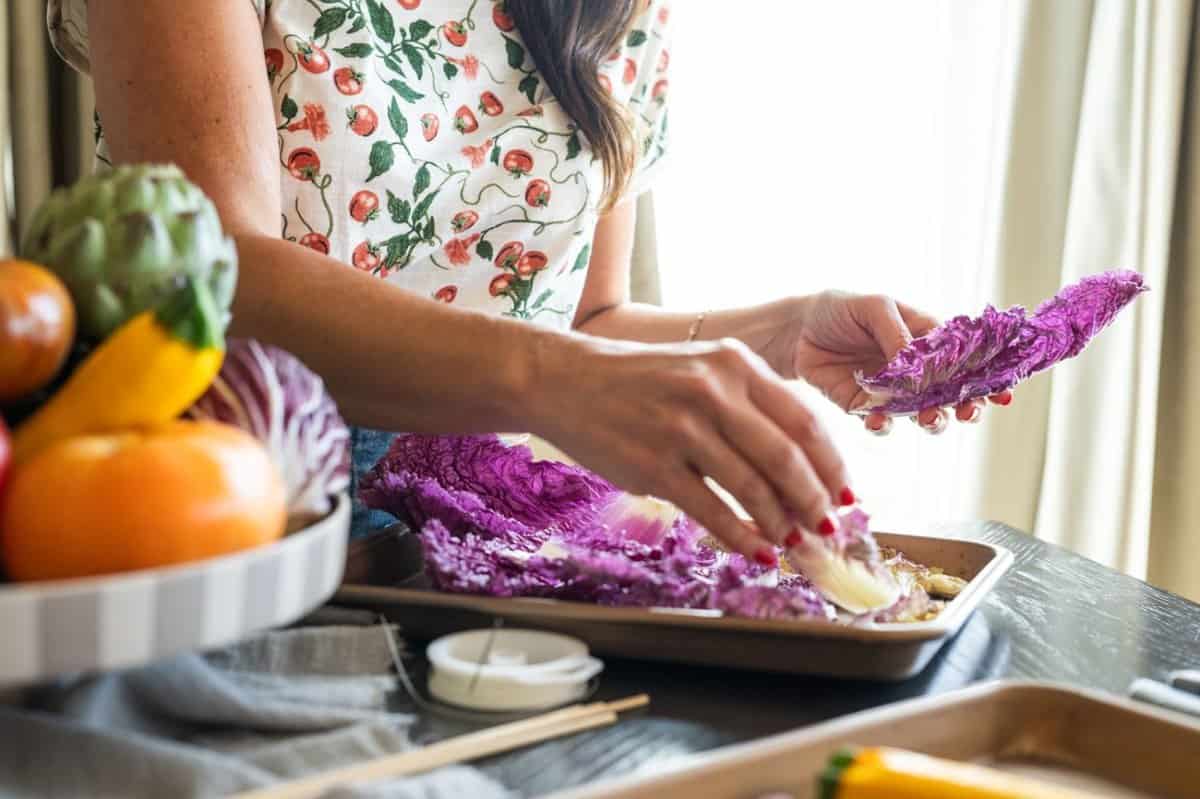
How to build an edible centerpiece
Building an Edible Centerpiece is easier than you’d think. However, there are a few key tips to keep in mind for stability and inspiration. Follow these tips and soon arranging these centerpieces will be second nature.
Tips for building edible centerpieces
- Start with the base. Use a cake stand or a decorative plate or tray as the base. A cake stand with a lip gives your piece height and keeps things comfortably contained.
- Use larger elements as the base for stability. A halved melon or cabbage placed cut-side down on the base makes a solid half dome build on.
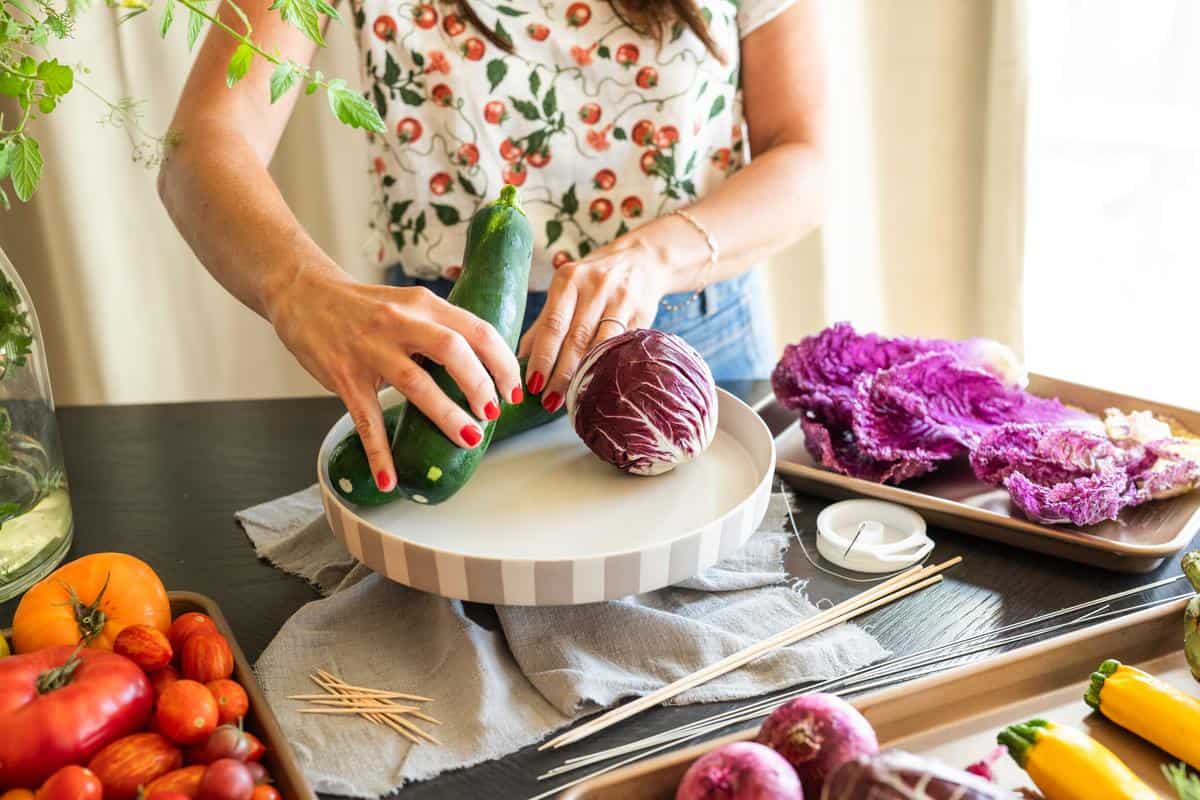
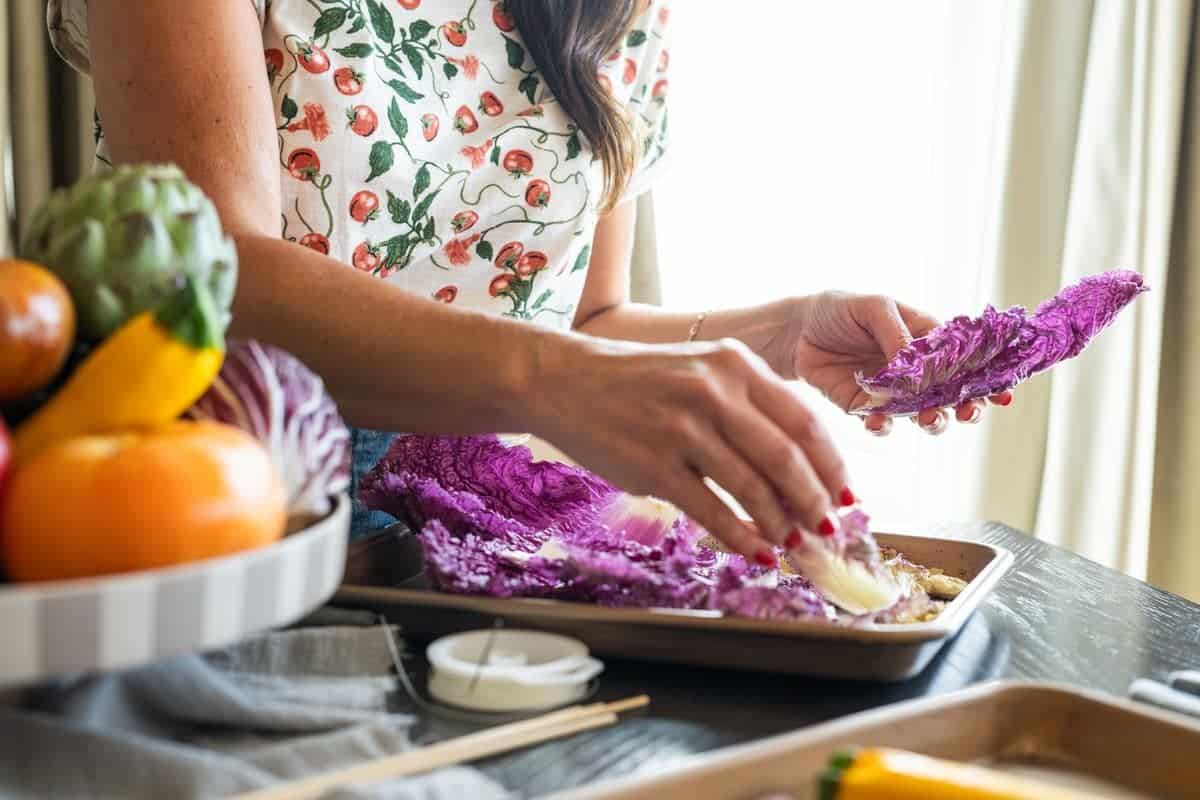
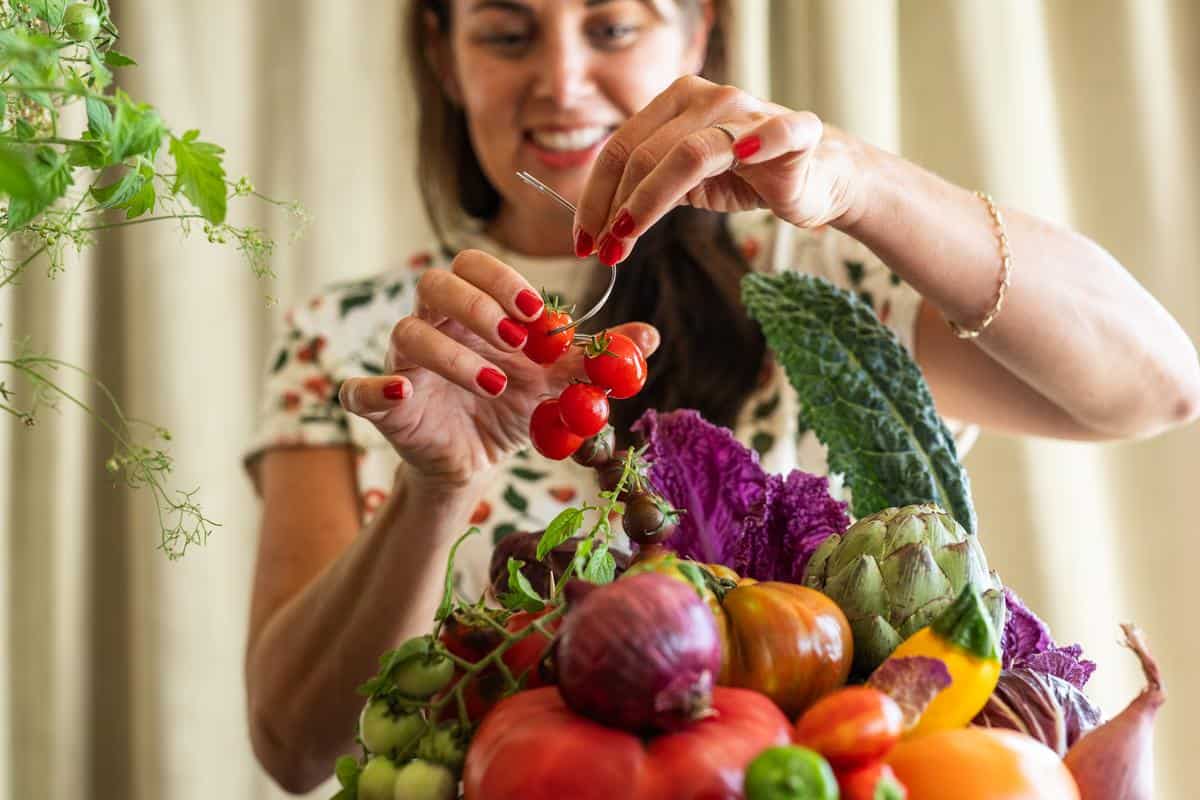
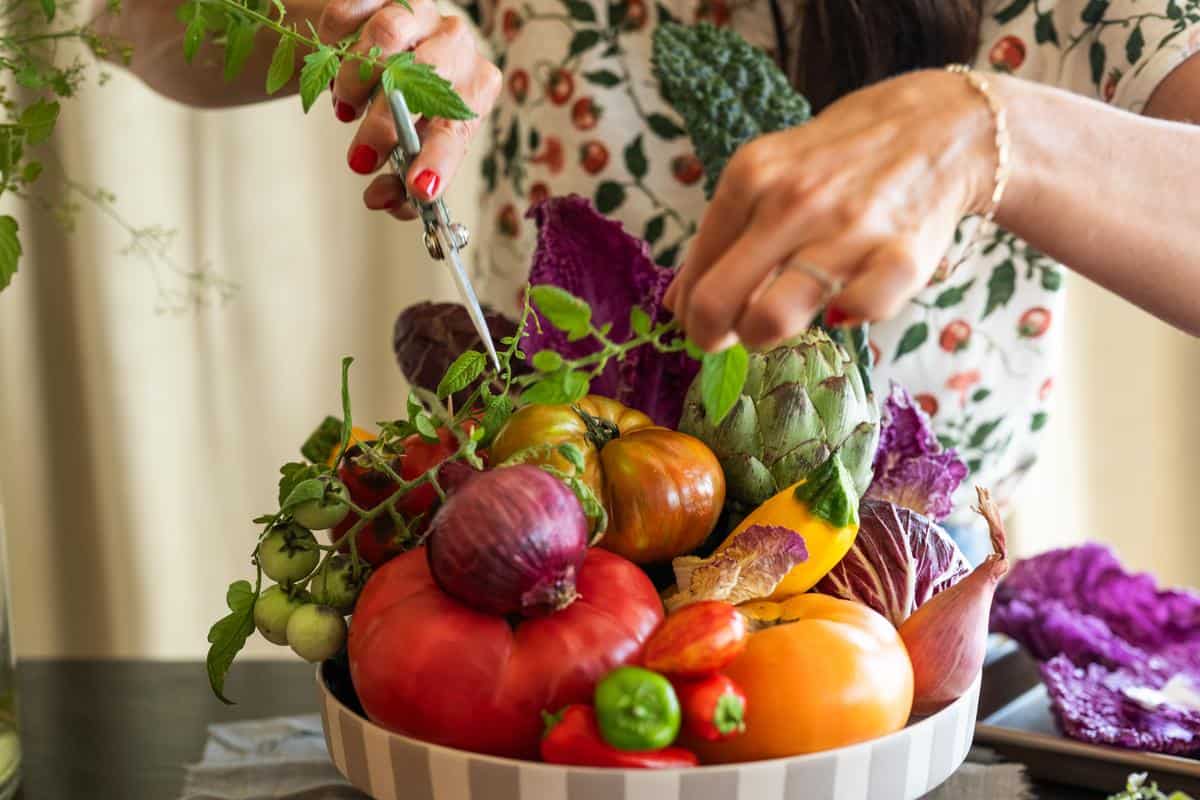
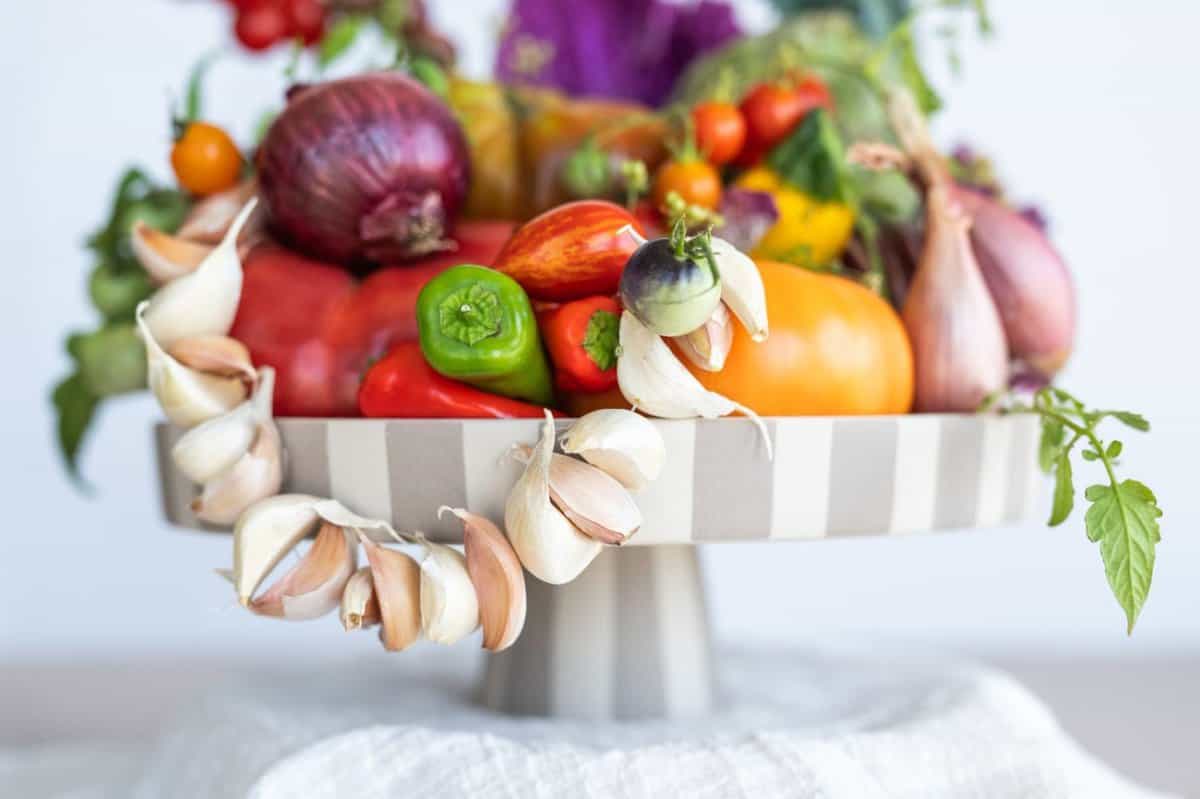
- Poke toothpicks or skewers into the larger elements, and start building up your arrangement. A few of lemons balancing askew on a toothpick or a long skewer of grapes adds dimension and interest to an edible arrangement. Insert a skewer into a larger base element and slide a rib of kale or radicchio onto the skewer to create an upright fan. This helps give the arrangement height, movement and makes for striking impact.
- Think of your edible centerpiece as a flower arrangement. Use a mix of ingredients to add height and build body. Larger elements such as heirloom tomatoes, artichoke or zucchini are like the statement flowers of your bouquet. While herbs, leafy greens and smaller elements can be used like filler flowers.
- Allow your creativity to bloom. There are no hard and fast rules when it comes to creating edible centerpieces. Just be sure to start with a stable base and build out your arrangement from there. Let the shapes and colors of the ingredients guide you.
- Go big or keep it simple. Whether you build a cornucopia-inspired edible centerpiece or keep it small and simple, you’ll bring beauty and interest to your table.
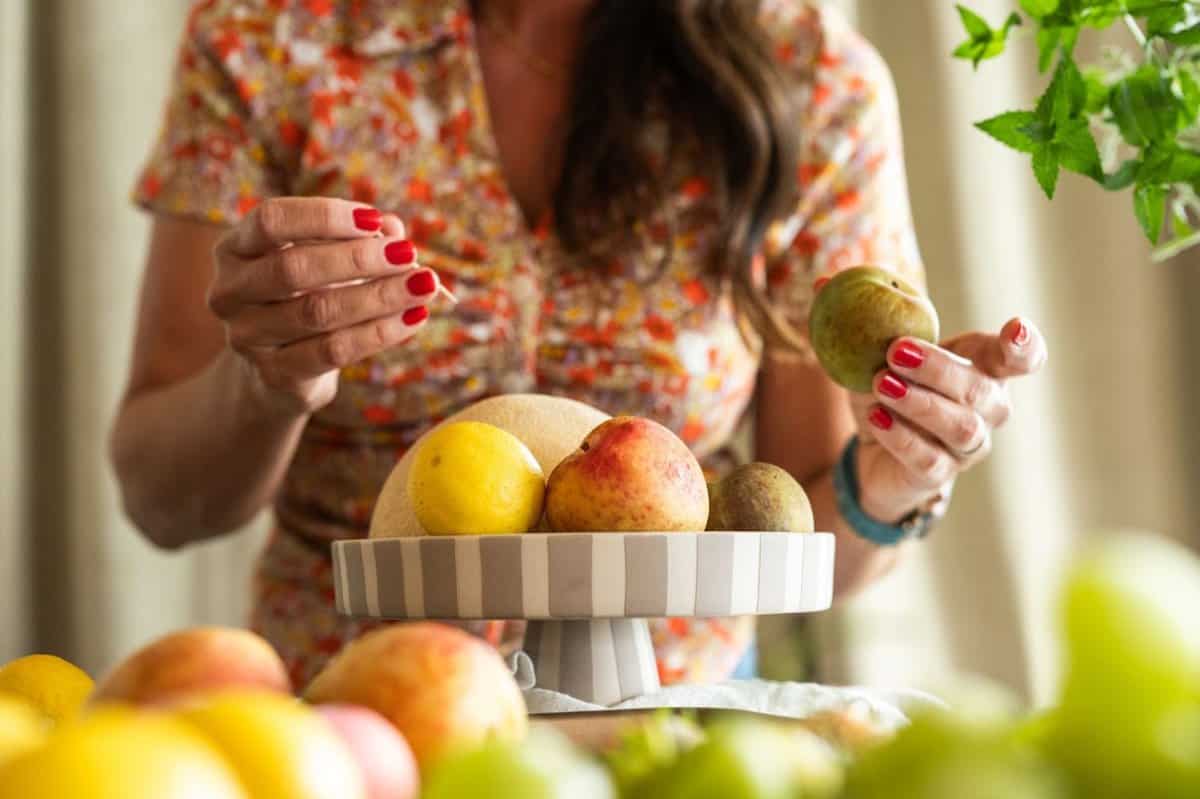
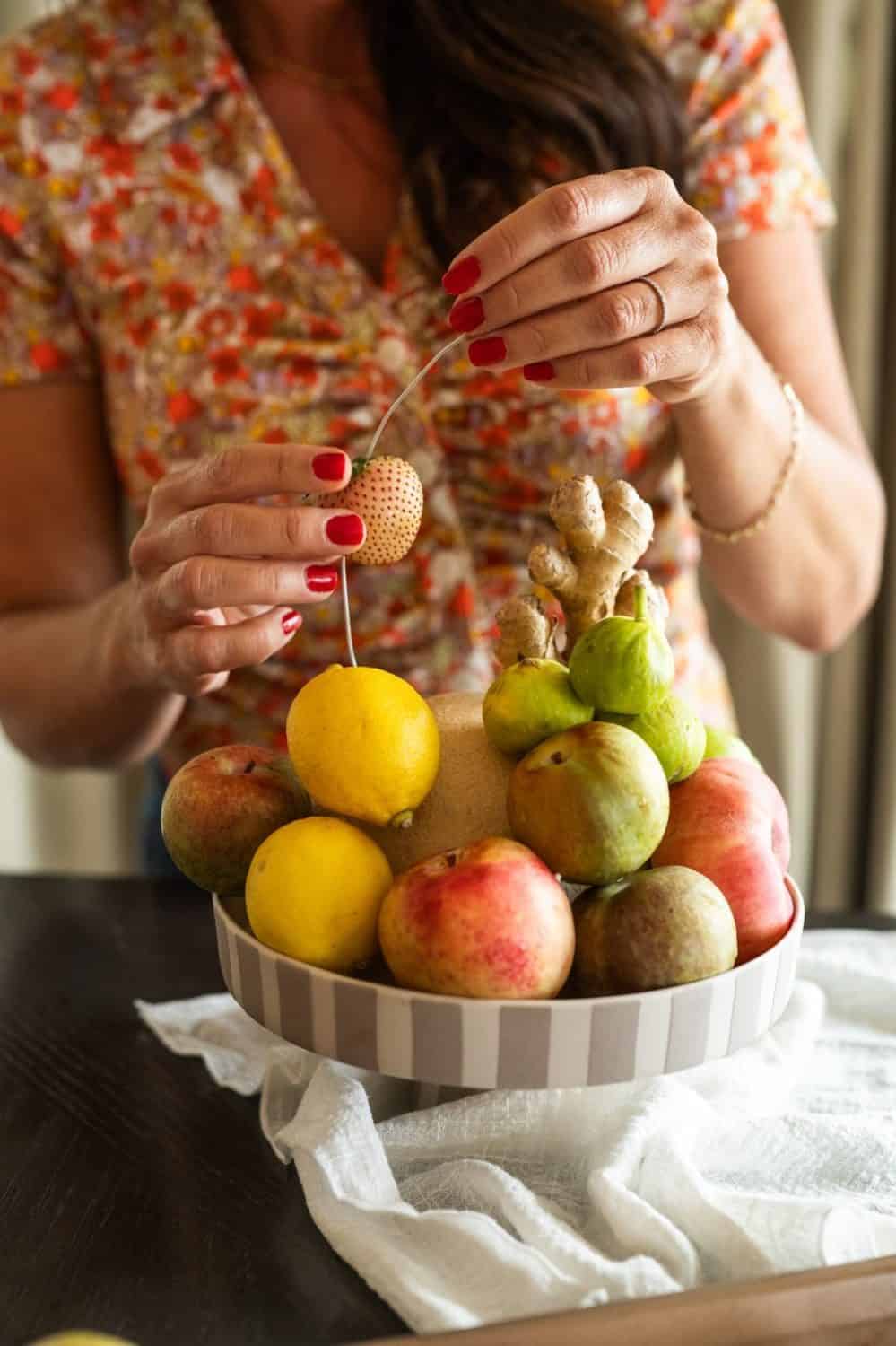
Once you’ve got the basics down, creating edible centerpieces is a piece of cake. Depending on your gathering or your mood, you can scale the scope up or slim it down.
3 flavors of edible centerpieces
- Big and bold. Make a major statement by going all out with a large scale edible centerpiece. Build it big, expansive and let your imagination take over.
- Modest medium. Go for elegance with a medium sized arrangement. You’ll still bring a big impact without a whole lot of effort.
- Small and simple. Mix it up with small scale containers like champagne coups, small plates, glasses of various heights, small vases, etc. The sweet simplicity of a small arrangement still says a lot without having to bust out your tool box. Simply fill a small collection of vessels with produce or place a little pile of produce on plates or in mini bowls.
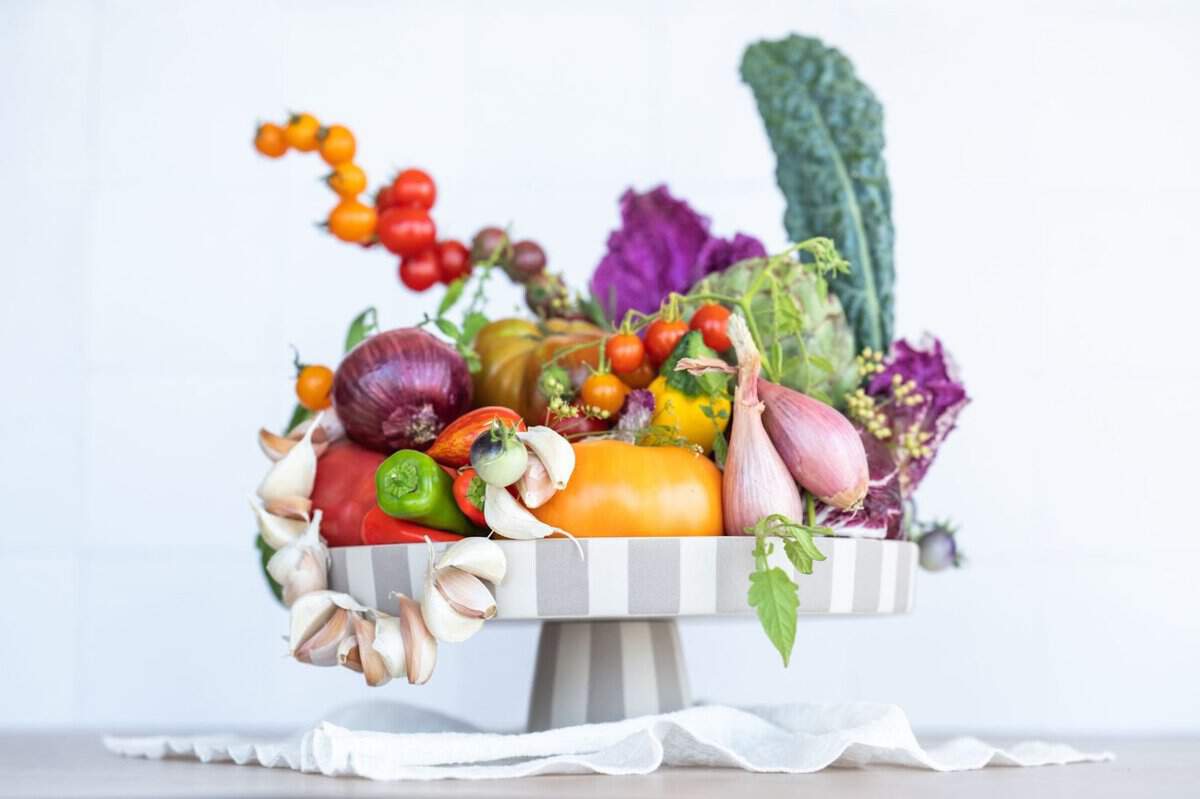
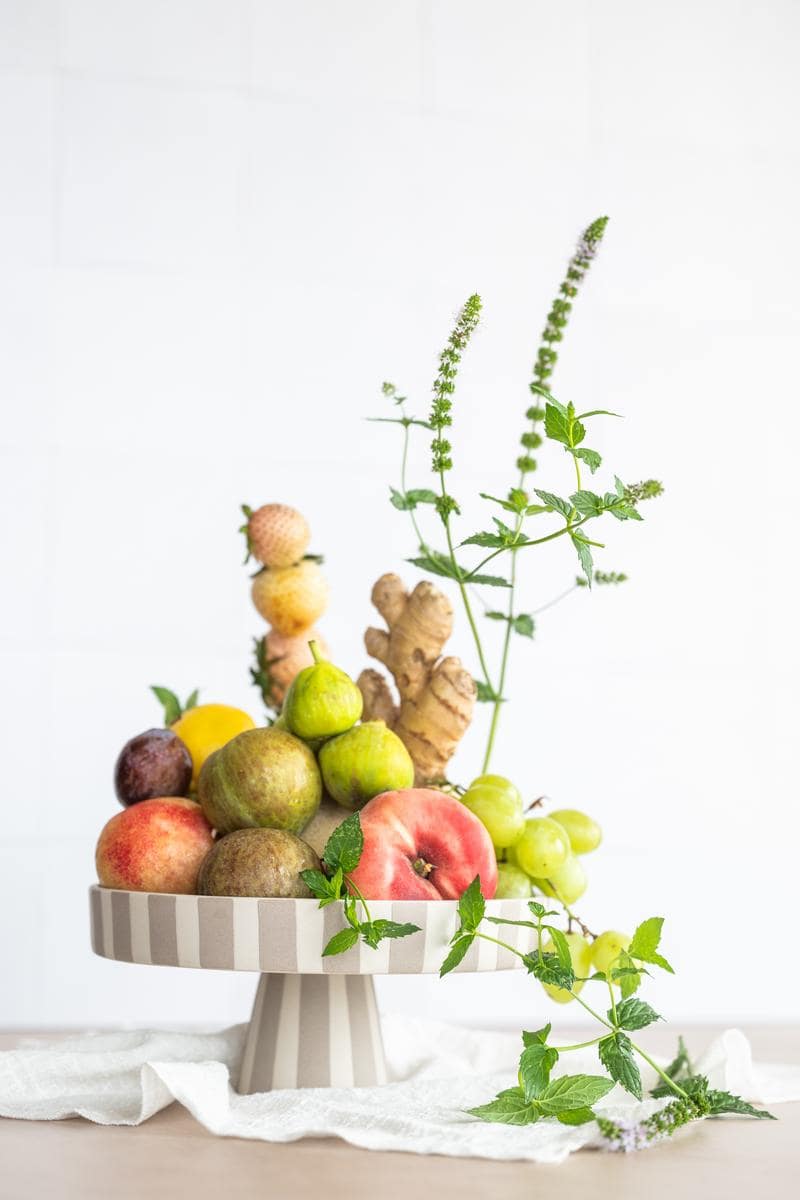
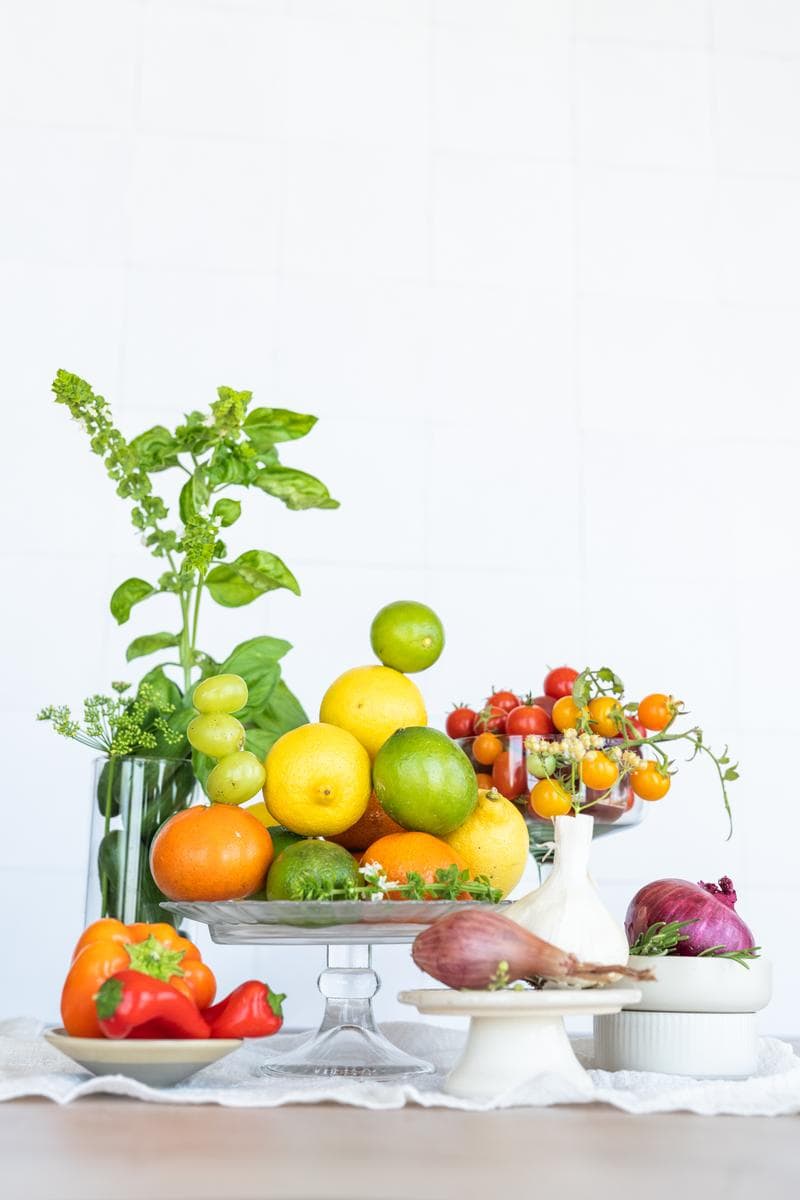
Bonus Idea: build out various sizes and place them around your party. Maybe set the big spread on your main dining table. Add the medium sized arrangement to a sideboard, and set up the small scale setting at the drink station. Or, mix them all together as one epic and elegant centerpiece for your next party!
Instead of flowers that wilt or cheese that goes uneaten, elevate your get-togethers into elegant soirées by adding an edible centerpiece to the table. The ingredients can be repurposed into snacks and meals that will fuel you and your family long after the party dies down. Send guests home with fresh produce to keep them eating healthy throughout the week.
Edible centerpieces are a smart and sophisticated way to bring life, color and chic freshness to your table and your guests!
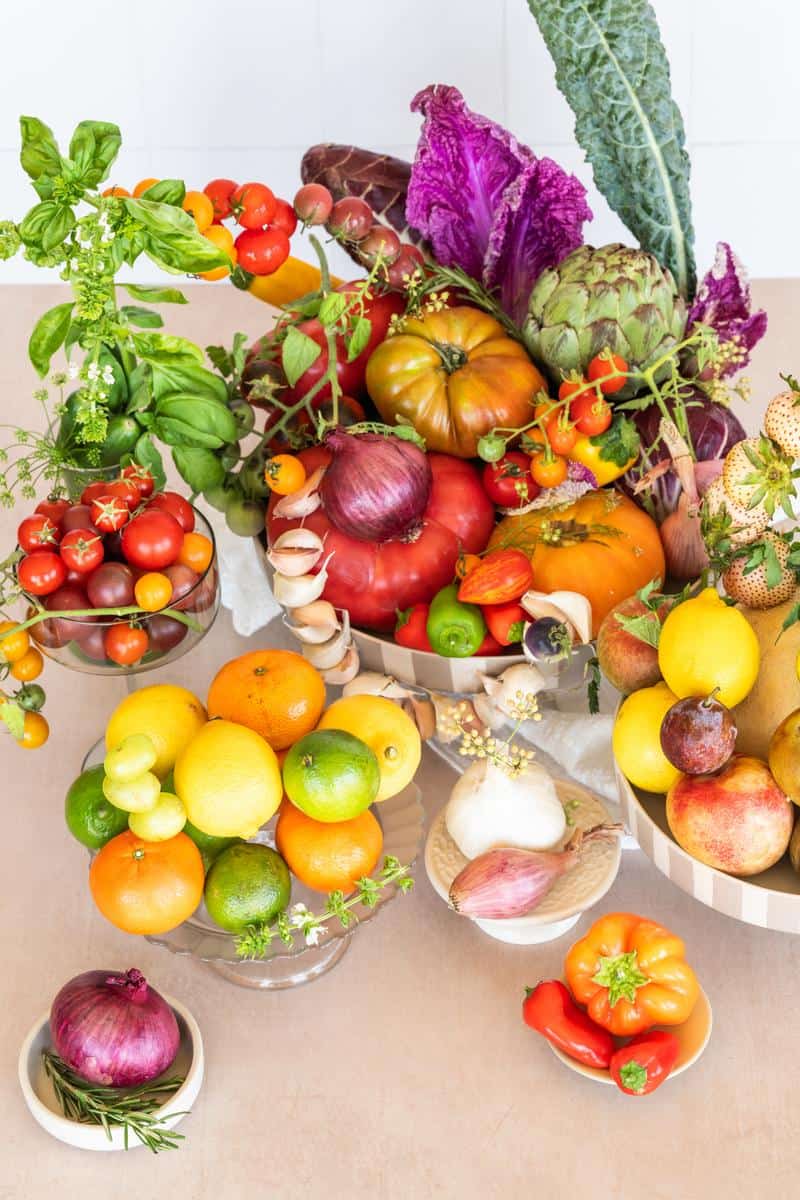
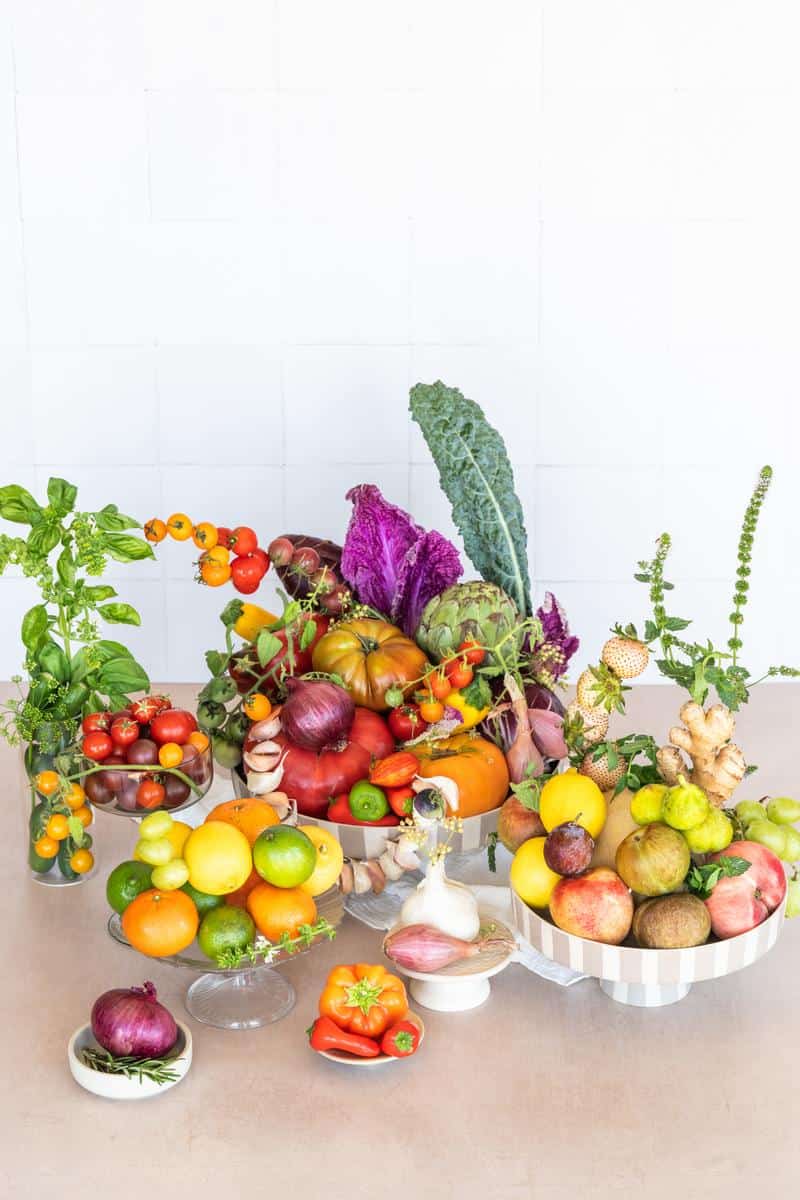
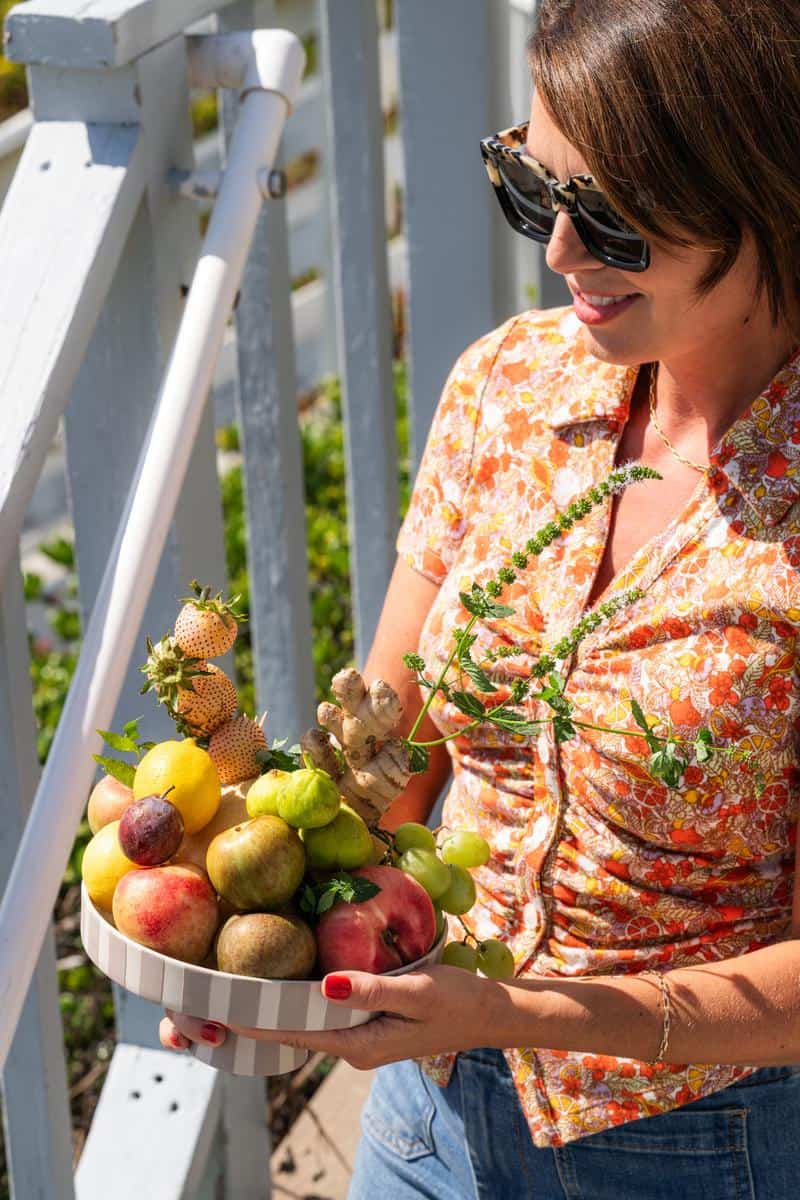
Meet Becky Sue Wilberding
Becky Sue Wilberding is the creative force behind Baking the Goods, a popular food blog where she shares her love for baking, photography, and design. Based in California’s central coast, Becky Sue’s recipes reflect her knack for balancing classic baking techniques with modern, approachable twists. Her work is known for its vibrant flavors and eye-catching presentations, encouraging bakers of all skill levels to have fun in the kitchen. Through her detailed recipes and beautiful imagery, Becky Sue brings warmth, whimsy, and delicious inspiration to baking enthusiasts everywhere.
Article by Becky Sue Wilberding of Baking The Goods @bakingthegoods. Photography by James Collier @jamescollier

